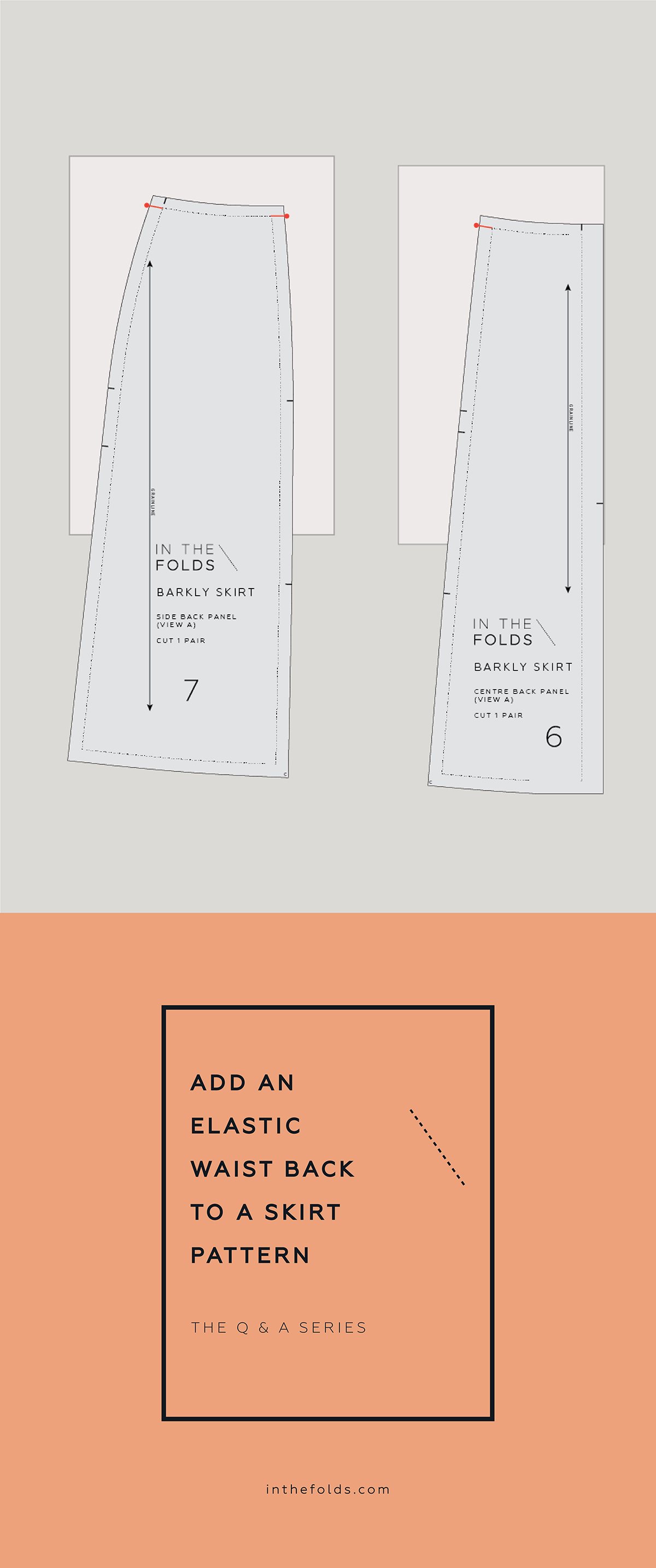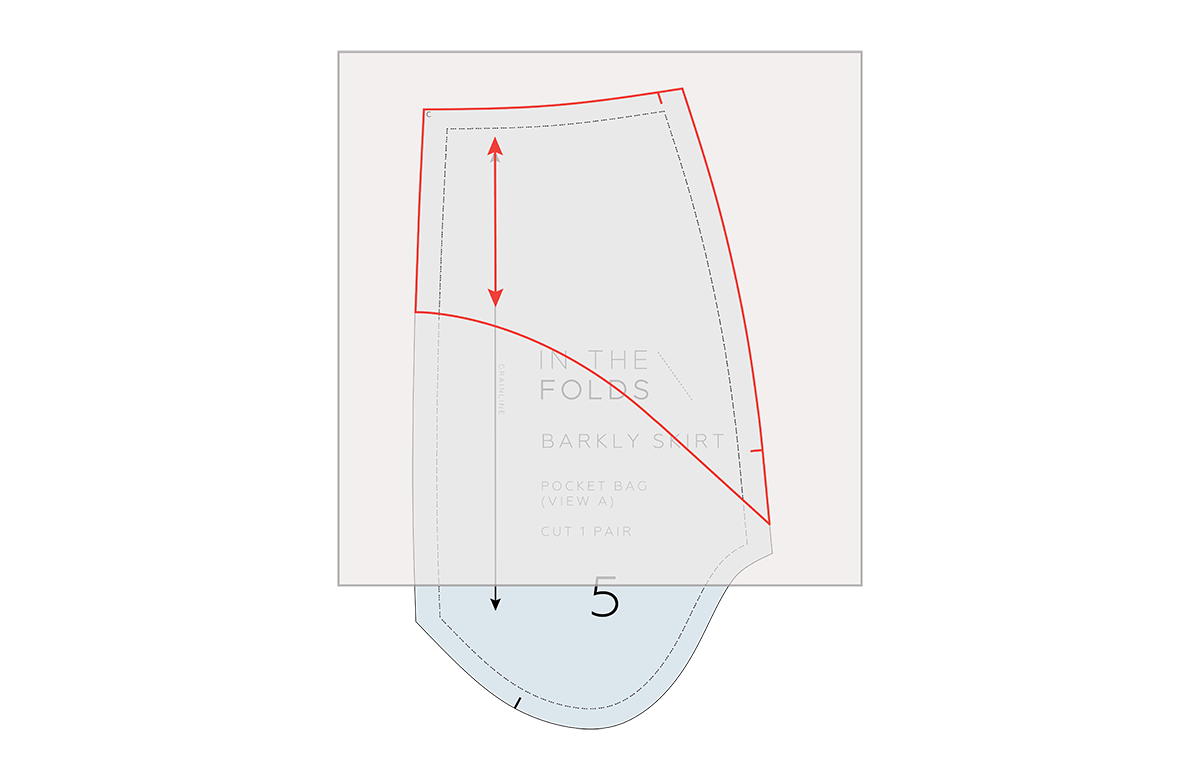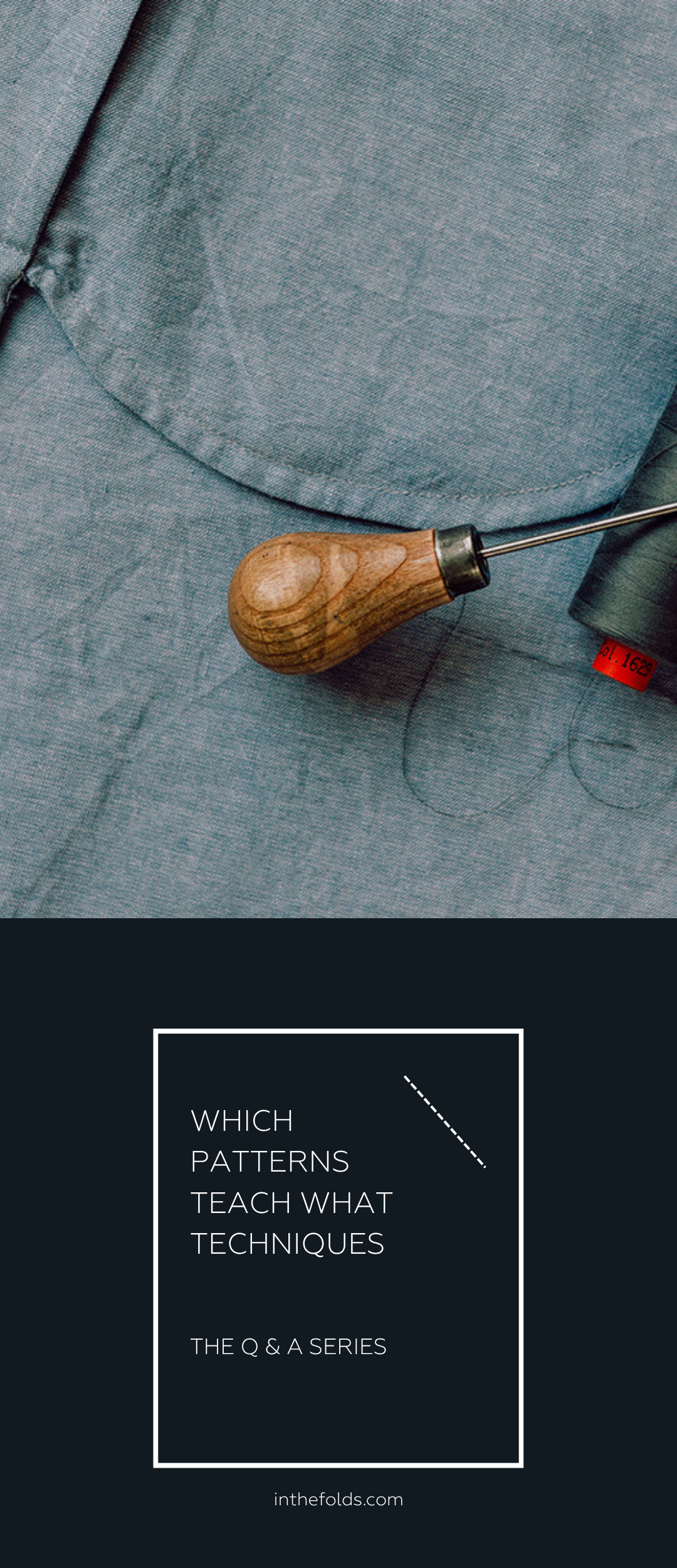THE Q & A SERIES
How to add an elastic waist back to the Barkly skirt pattern
Hi Emily!
I'd like to have a go at making a Barkly skirt, but I'm concerned about putting in a heap of time and effort only to make a skirt that no longer fits me because of my changing waist size. Any thoughts?
Hello!
Sometimes we avoid sewing fitted patterns like the Barkly skirt because we don't want to spend time making an item of clothing that ends up sitting in our wardrobe unworn.
Fluctuating body measurements is a common experience - so please know that you are not alone! For this very reason, we included how to add an elastic waist back in our latest Curated by ITF project - the Barkly skirt Fit Kit, and I'm so pleased I can share it with you now!
When to add an elastic waist back
Although this is more of a pattern hack rather than a fitting adjustment, we know that for many, skirts without elastic waistbands can cause discomfort, particularly when sitting.
If your waist measurement regularly changes or you have a large difference between your waist measurements when sitting compared to standing, this may be an alteration you would like to try.
With this adjustment, we will be moving the centre back zip to the side seam.
Prepare to make the adjustment
To make this adjustment you will add width to the back panels of the skirt. To determine how much width to add you can do a couple of things:
Take your waist measurement when standing and then again when sitting. Note the difference between the two. This is the amount you will need to add to the waist of the pattern.
Take your waist measurement a number of times throughout the day or month. This option is good for those of you who know that your waist measurement fluctuates over certain periods of time. Calculate the difference between the smallest and largest measurements. This is the amount you will need to add to the waist of the pattern.
Step 1
Take the SIDE BACK PANEL [7/16] and CENTRE BACK PANEL [6/15] and attach paper to the upper section of each piece. We won't alter the CENTRE BACK seam so you won't need extra paper there.
Take the amount you need to add to the waist circumference and divide by 2. (We divide by 2 as the pieces are cut as a pair - half is added to one side and the other half added to the other.) Then divide this amount by 3. (We will split the amount to add between the three places - either side of the back panel line and the side seam.) For example, if adding 9cm; 9/2=4.5cm; 4.5/3=1.5cm added per seam.
Extend the waist STITCH LINE by the distance calculated above on each of the seam lines.
Step 2
a Join the end of each line marked in STEP 1 to the STITCH LINES (side seam, panel seam) on each piece. We recommend aiming to meet the original STITCH LINE below the upper notch so that you have a nice smooth transition between the lines.
b If making a large alteration, you may struggle to create a smooth line when working on the CENTRE BACK PANEL. If this is the case, we suggest re-joining the line at the hem. This will add a small amount to the piece but will ensure the pattern piece does not become distorted.
Step 3
Add seam allowance onto your new lines.
Step 4
Cut along the new CUT LINES.
View A: We now need to alter the back waistband piece. Measure the waist STITCH LINE on the altered pieces. To measure a curve, turn your tape measure on its side and follow the curve of the line. Take note of these measurements.
For View B, you will need to re-draft the back facing piece - first finalise the pattern by moving to STEP 6.
Step 5 (VIEW A ONLY)
a Take the FRONT WAISTBAND [8] piece and measure the side seam STITCH LINE. This is the height we need our new back waistband piece to be.
b Take a piece of pattern paper and fold it in half. We will draft the piece on the fold of the paper so we can create a full pattern piece.
Make a rectangle in which the height is the measurement determined above in A and the width is the measurement determined in STEP 4. Label the fold as CENTRE BACK.
c Using the CENTRE BACK PANEL [6] waist measurement, make a notch this distance from CENTRE BACK. This will help when you're attaching the waistband to the skirt.
d Add seam allowance to the top and bottom edges (1cm (⅜in)) and side seam (1.2cm (½in)). At this stage, our side seam allowance is the same as it was originally. It is possible to sew a zip with a 1.2cm (½in) seam allowance, but if you are worried you will find this too difficult, we suggest increasing the side seam allowance before cutting the piece (see STEP 7).
e Cut out the piece. You can pin through the layers of paper to prevent it moving around. Unfold the piece and add a grainline at CENTRE BACK. Cutting instructions are now Elastic back waistband / CUT 2. This piece does not require block fusing.
REMOVE CENTRE BACK SEAM (OPTIONAL)
Step 6 (BOTH VIEWS)
As the zip is moving to the side seam, you no longer need the centre back seam. You can keep it if you like the look of the panel line there. To remove it, cut off the CENTRE BACK seam allowance by cutting along the CENTRE BACK STITCH LINE.
Change the grainline to indicate that the piece is to be cut on the fold (use rectangular grainline instead of straight grainline) and alter cutting instructions to CUT 1 ON FOLD.
INCREASE SIDE SEAM SEAM ALLOWANCE (OPTIONAL)
Step 7 (BOTH VIEWS)
An invisible zip can be sewn with a 1.2cm (½in) seam allowance, but if you are concerned you will find it difficult to sew with this seam allowance, consider increasing your side seam seam allowance to 1.5cm (⅝in) or 2cm (¾in).
If you choose to do this, you will need to make the alteration on the FRONT SIDE PANEL [2/13], pocket pieces and waistband/facing pieces. Remember to move the notches over to the new CUT LINE after making the alteration. This will mean you will have a larger seam allowance on both sides of the skirt although the zip is only on one side. You could trim it back on one side after cutting, although it's not necessary.
For View B, re-draft the back facing piece.
Adding an elastic waist back to our garments makes our wardrobe less restrictive - the clothes we make fit our bodies as they are, they are comfortable to wear and we can wear them whenever we want.
These are all such important elements of our ethos at In The Folds, and we're happy to be able to help you learn how to achieve this on the garments you make!
Happy sewing!
Emily
For more issues of the Q & A series, you can check out the archive here.
WHAT YOU’VE BEEN MAKING
Barkly skirt made by @sosewshaw
Hove jacket made by @mamasuesews
Collins top made by @beckie_girl
Barkly skirt made by @stitch.unpick.repeat












































